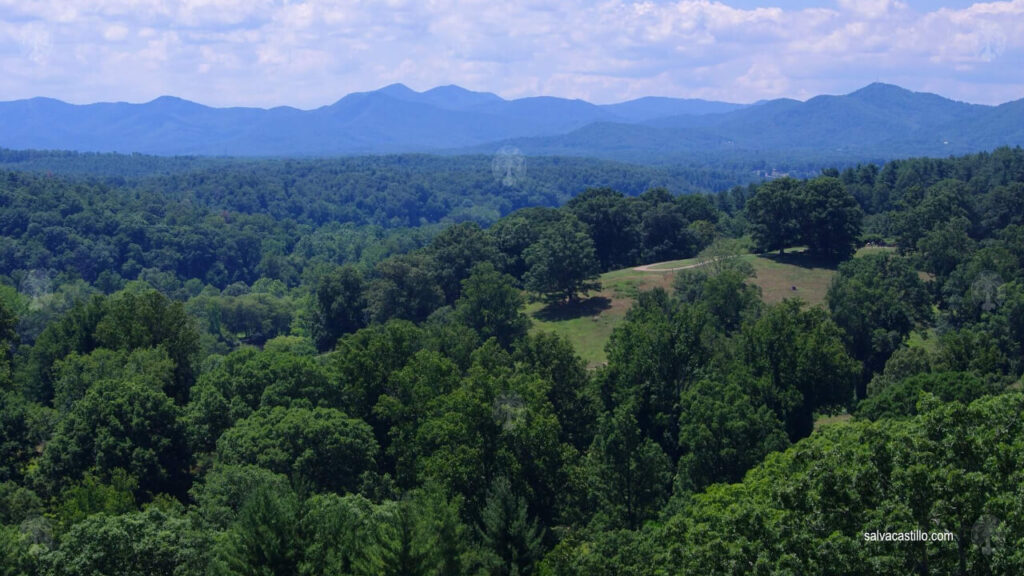Optional: listen text-to-speech using the voices already in your device
This feature makes use of the Text-To-Speech capability as you have it already installed and configured on your own device. You will see that there are some voices that are not so good, choose from the list if you have a chance.
When the opportunity arose to make my first road trip in America, I had a clear idea of the car I wanted to drive: a Ford Mustang convertible. Yes, I know, how tacky I am. Whatever you say. I was clear that I wanted a convertible for an expected sunny trip of ~1400 kms, and trying a Mustang was a personal pending. So it just happened:
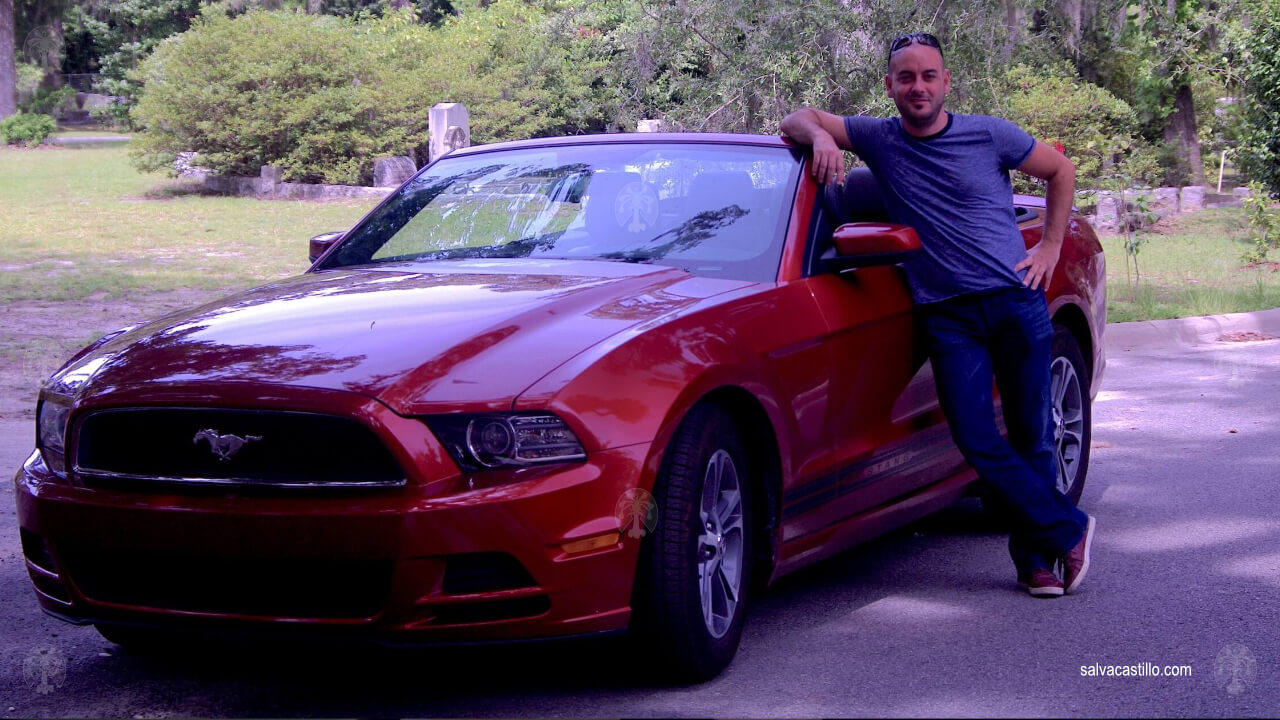
Mustangs were not imported to Europe then. It was an American car made for Americans. Designed to travel the American interstate highways. They say “wherever you go, do as they do”. So I put the pedal to the metal, second star to the right and straight on ’till morning.
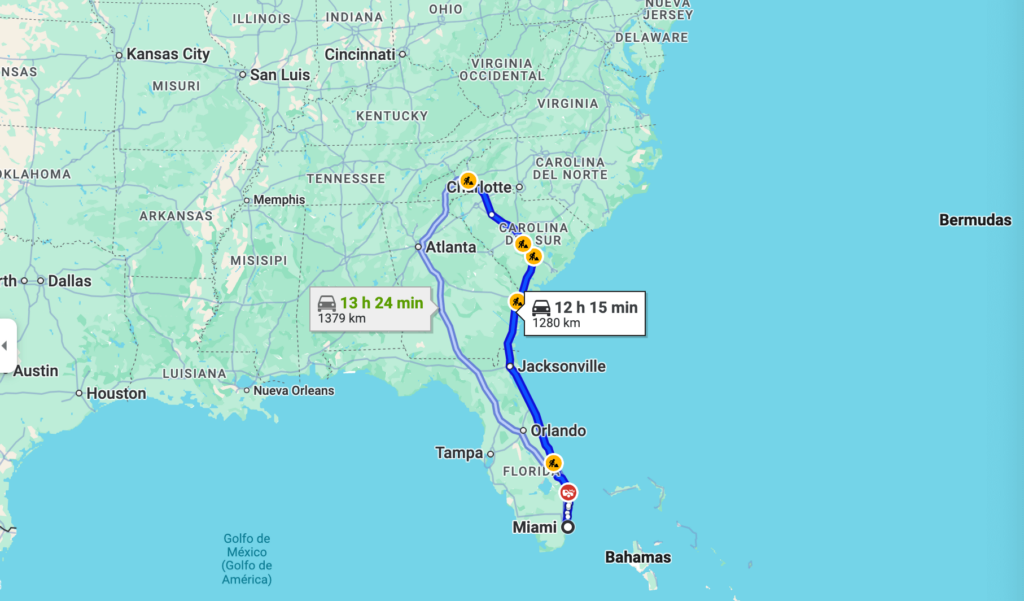
The first leg was Miami to Savannah, in the state of Georgia. I could have chosen to go through Atlanta, but I felt like visiting that city because of the movies; the truth is that I always do things because of the movies. “Forrest Gump” sat on a bench in Chippewa Square:
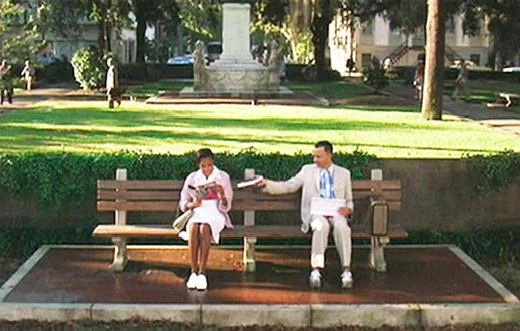
… and, above all, the magnificent “Midnight in the Garden of Good and Evil” took place in Savannah.
But the route to get there couldn’t be more bland. Florida is a state which surface is comparable to that of Spain -inches more or less- but it is absolutely flat! Its highest point is Britton Hill, with an altitude of only 105 meters 😑. And if you don’t have any orographic features to overcome -like a mountain range-… what’s the most efficient way to move from one point to another? Right, by following a straight line. So the ride until you get out of Florida is a multi-lane road in each direction but with no curves and enclosed between two rows of tall hedge-trees on either side. Like wedged in a tunnel with no ceiling. So driving so many hours on a sunny day was made more enjoyable with the convertible, which made it very lively.
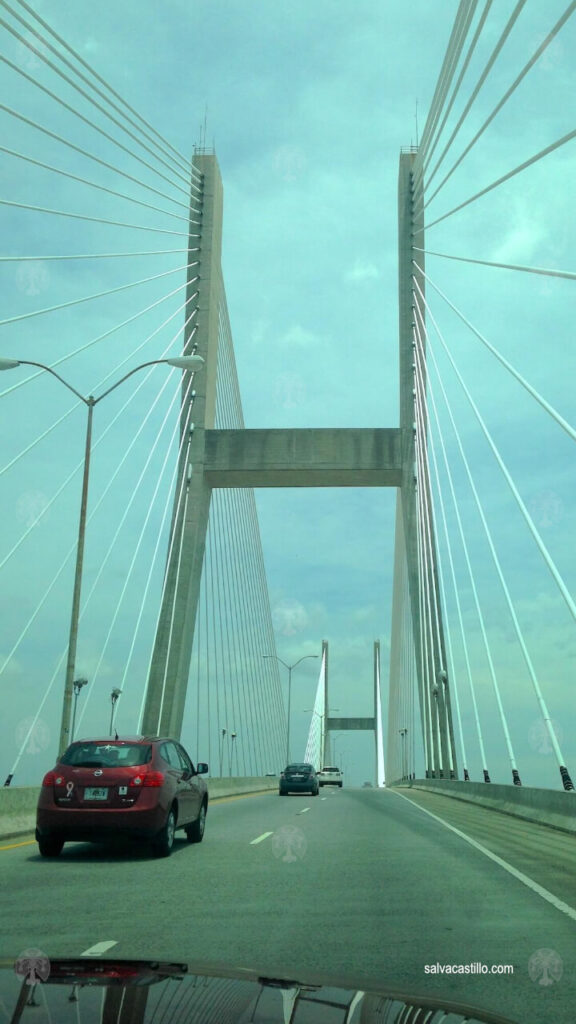

Savannah
Founded in 1733, this delightful city is noted for its cobblestone streets, imposing colonial-style homes and Southern architecture that whispers stories of the past. The Historic District is filled with parks lined with linden and oak trees covered with Spanish moss (Tillandsia usneoides) that give it a mysterious and enchanting air.
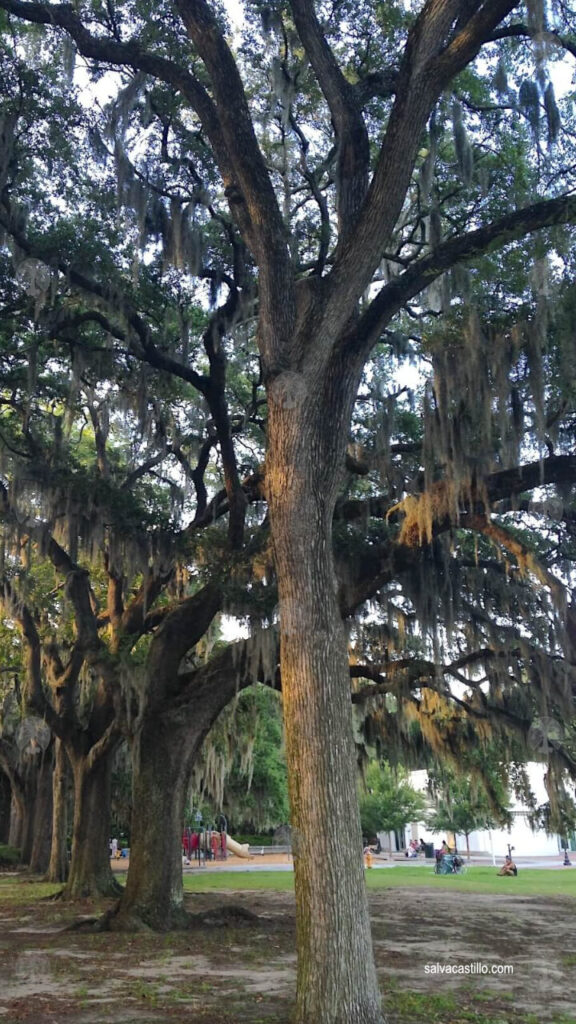
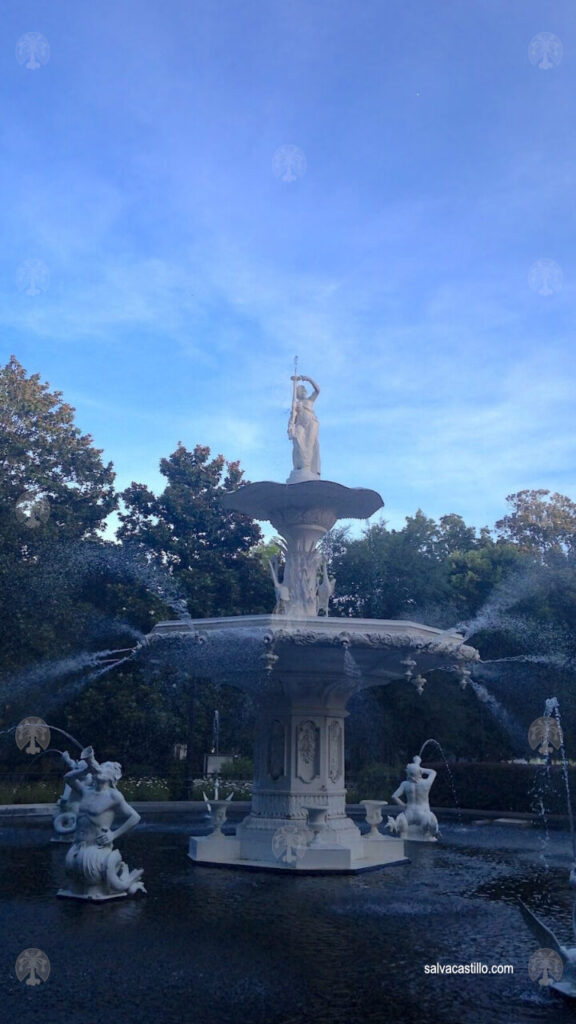
Strolling through the Historic District it looked like Rhett Butler and Scarlet O’Hara from “Gone with the Wind” would suddenly appear around a corner riding in their horse-drawn carriage.
Georgia being a southern state, personalities of the Confederate army are still revered. Lafayette McLaws was a Confederate Major General who defended Savannah from Union troops. French surnames are common to see in Louisiana and Georgia due to French colonialism and also exile following the French Revolution.
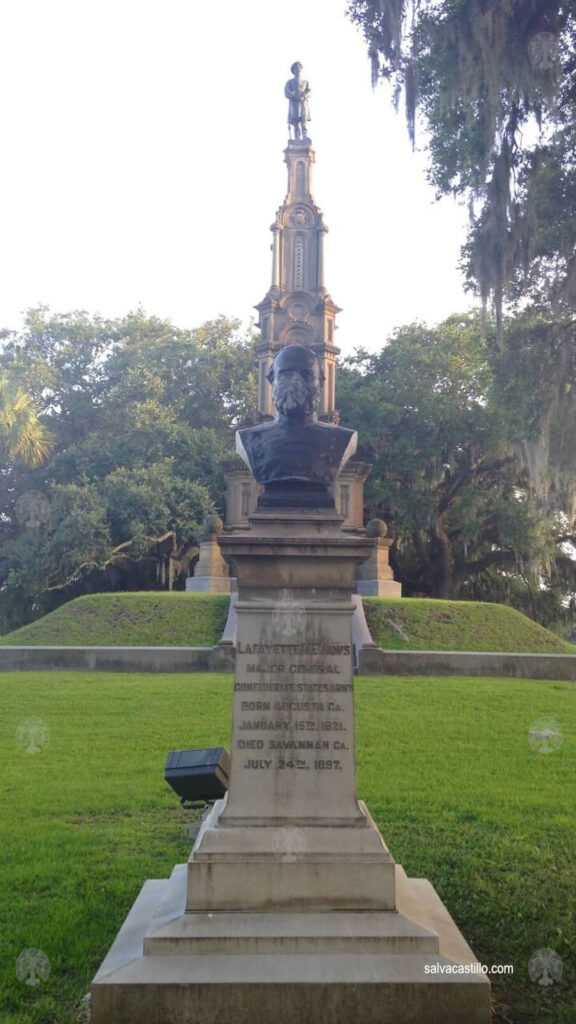
Catedral of Savannah
The Cathedral of San Juan Bautista was built in 1799 and then rebuilt in 1876, after a fire. It was designed by architect William H. Purcell in the neo-Gothic style with twin towers and a symmetrical design.
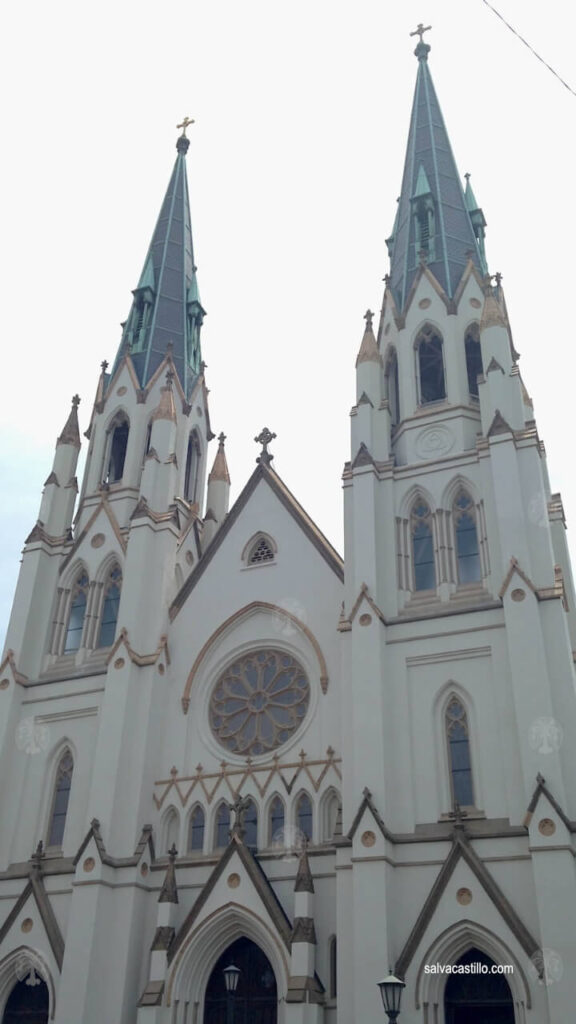
The cathedral has a large central nave that is adorned with columns and pointed arches. In addition, the ceiling of the church is made of wood and is carved in the form of decorative beams. The main altar of the cathedral is made of marble, with finely worked details, with the image of St. John the Baptist.
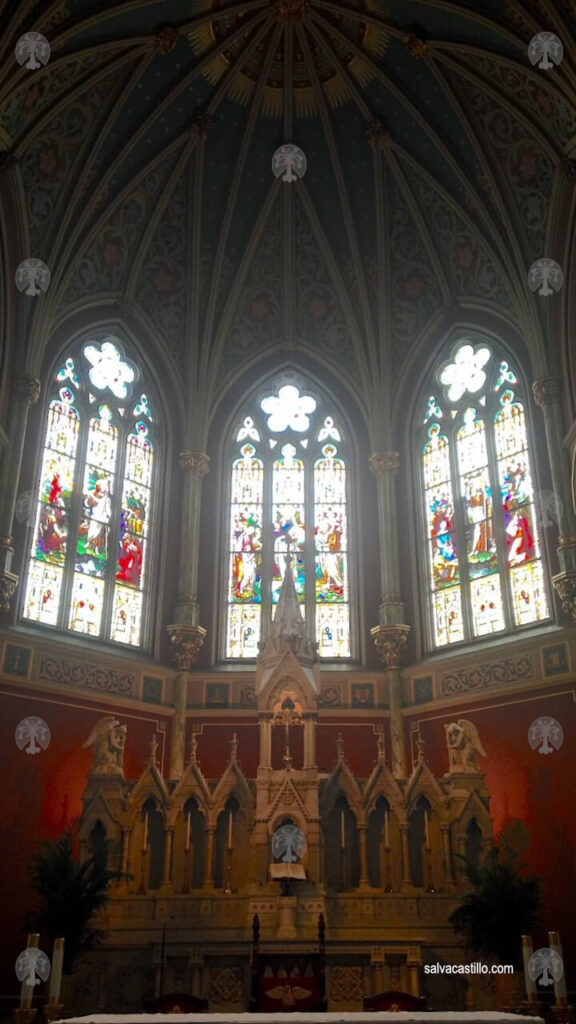
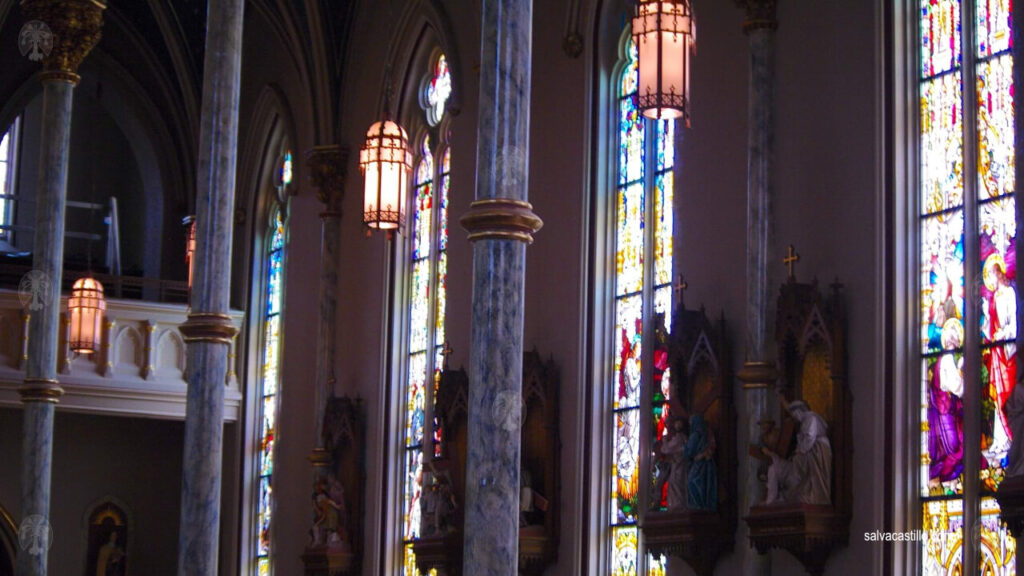
The Cathedral organ has 2 manuals (keyboards) and 30 stops (a set of pipes that produce different tones) of various sizes and materials, such as wood and metal, which produce different tones and timbres.
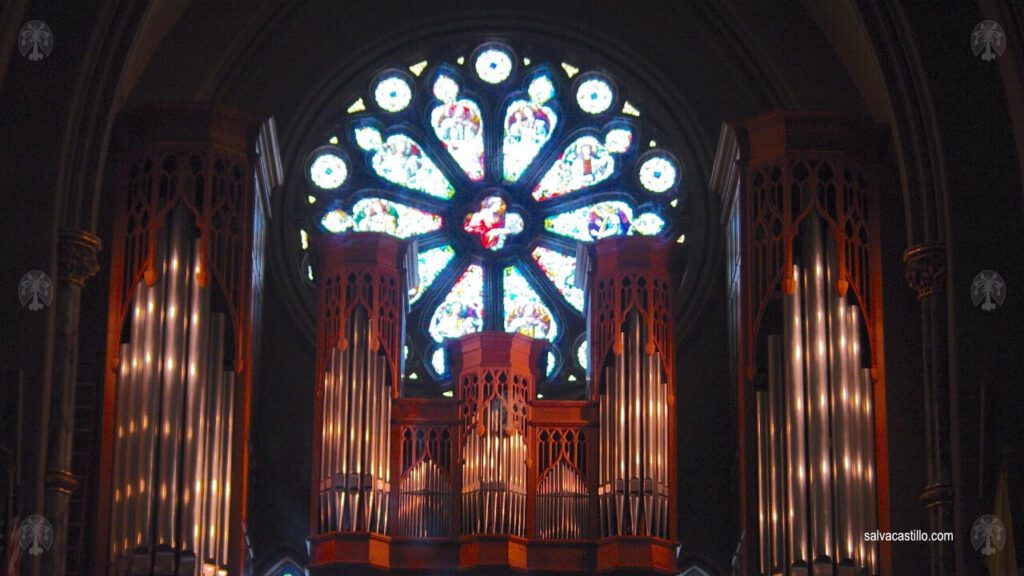
The cathedral has more than 20 stained glass windows that decorate the windows of the church, especially on the side walls and the central nave. These stained glass windows vary in size and design, but together they cover a large part of the walls, flooding the church with a soft and colorful light that changes depending on the time of day and the position of the sun.
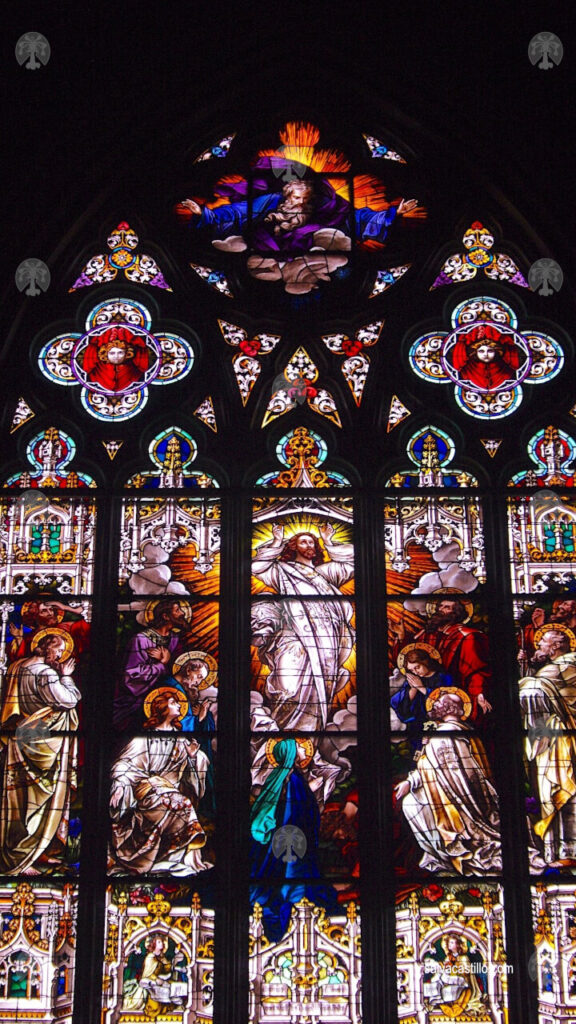
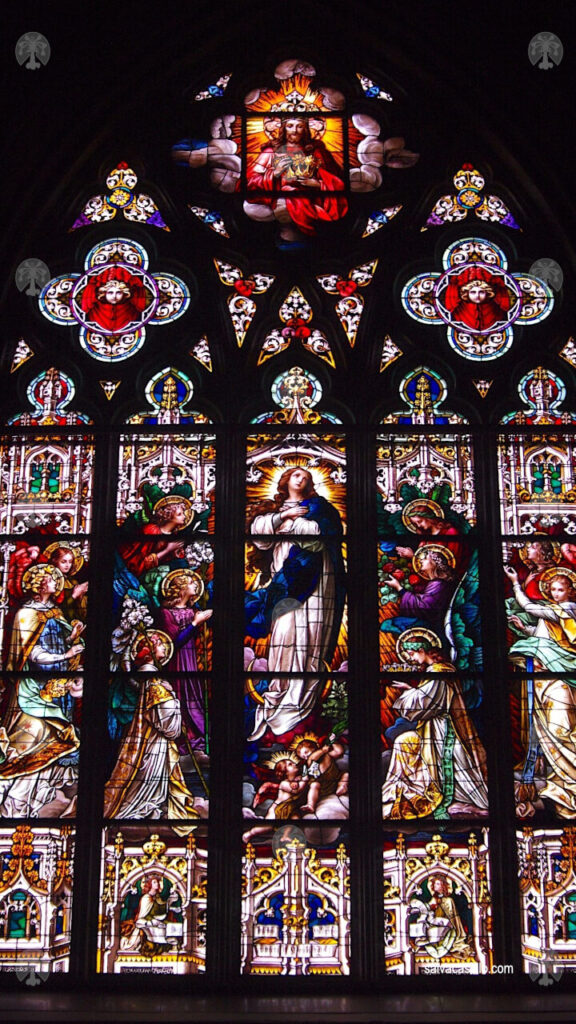
Where to eat
Savannah’s cuisine combines African, Indian, British and French influences, resulting in a unique blend of flavors and cooking techniques. On a brief stop in our exploration of the city we stopped at the French restaurant “Circa 1875”, having for lunch a rustic roast beef sandwich with a mustard sauce and a plate of snails in wine and butter – I still remember that lunch after all these years, how tasty it was!. And I see they still have it on the menu.
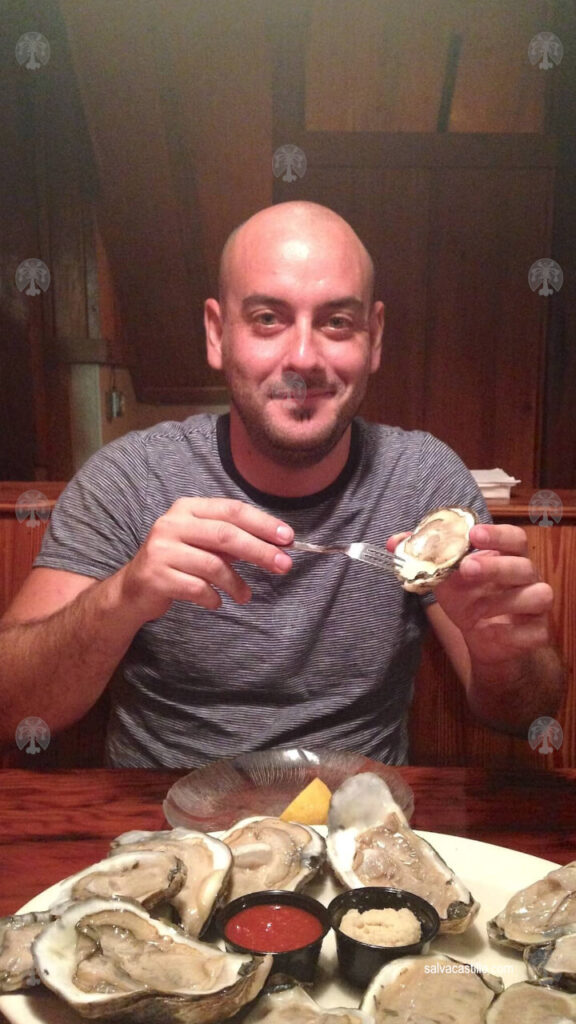
For dinner we went to the banks of the Savannah River in search of typical restaurants in the area -as good tourists-. Thanks to the recommendations of the Yelp application, we found another wonderful place to dine. It was at Huey’s restaurant, where we got fine oysters, as the menu differentiated between Maine oysters and California oysters. As the good hillbilly I am, I always thought that oysters were all more or less the same, but no way. On the California coast, the most common oysters are Pacific oysters (Crassostrea gigas) which grow in warmer, less saline waters, while Maine is dominated by Atlantic oysters (Crassostrea virginica) which grow in colder, more saline waters. Honestly, right now I don’t remember if there was so much difference between one and the other; it is also true that I eat them with horseradish sauce and the nuances are rather carried away by the sauce. I was such a delicate eater and who would have thought that I would end up liking raw oysters.
Asheville
Returning to Asheville, the route becomes a real delight: mountains and lush forests of deep dark green as we move onto Interstate I-26 and from Georgia to South Carolina -via Columbia and Spartanburg- until finally getting into North Carolina.
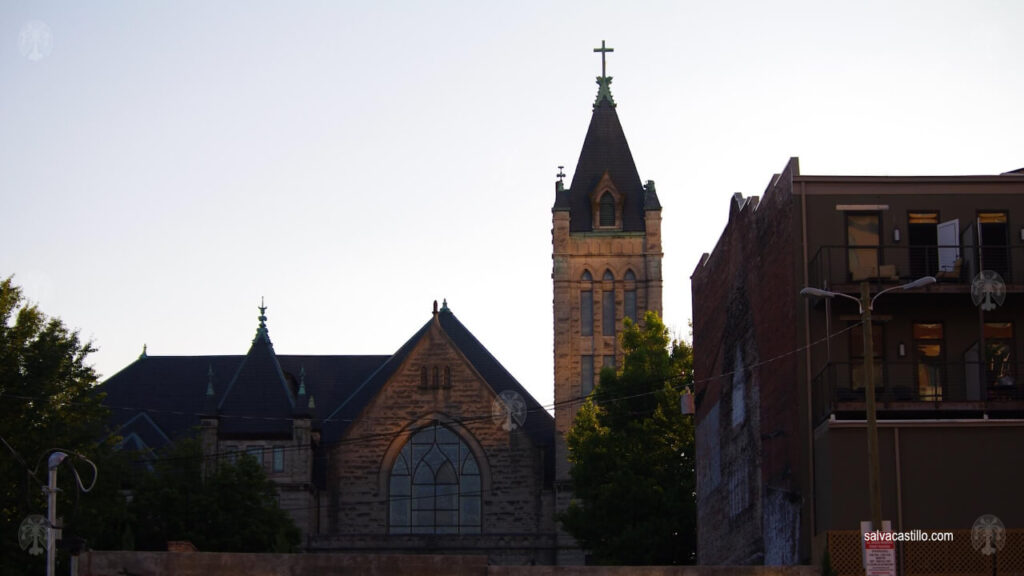
Asheville is a vibrant city, famous for its arts scene, natural beauty and progressive culture. The progressive culture has to be put in an American context. Many bohemians there are “hippies with a thousand bucks in their pocket” but compared to other more traditional U.S. locations, Asheville definitely has that “Rive Gauche” vibe with local breweries, street markets, etc. A really nice, cozy and lively town at night.
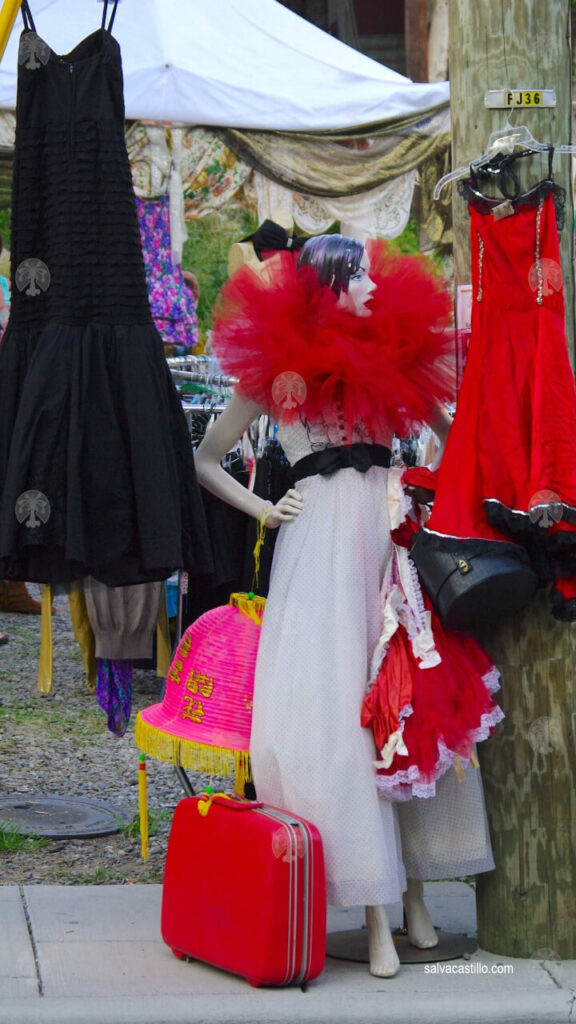
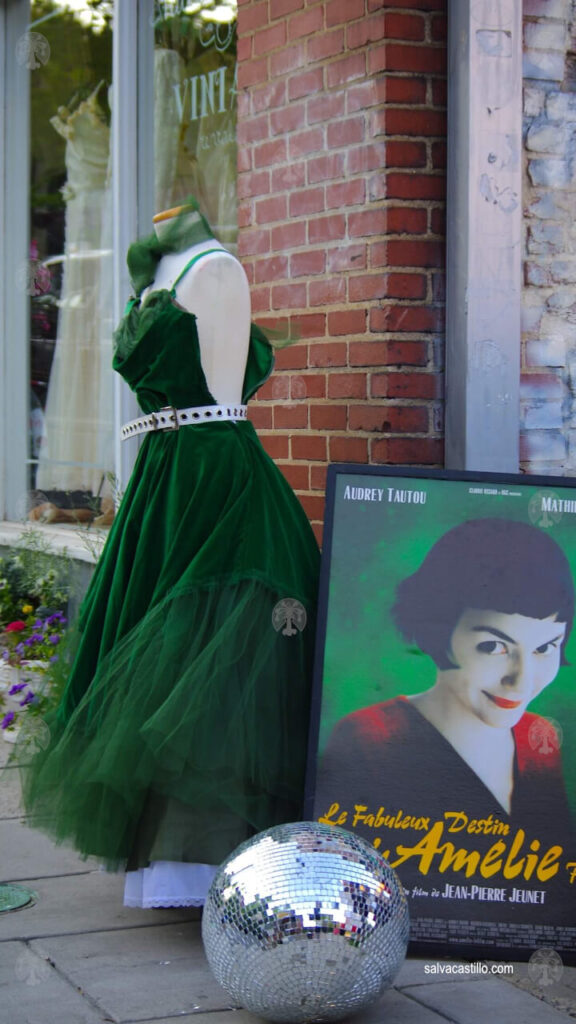
Asheville is in the middle of the Appalachian Mountains, habitat of black bears. Our dear hosts J-PL and ABL welcomed us into their fabulous home on the outskirts, whose backyard bordered a creek. We hiked out and found bear tracks nearby. J-P told us that it was not uncommon to hear them on the other side of the fence at night, and that on more than one occasion they were seen prowling the garbage cans (which are special, reinforced, anti-bear dumpsters there). For me it is still a source of admiration how internalized North Americans have the coexistence with potentially deadly wildlife. A bear, even if it is black -smaller than the Grizzlies- is an animal that is stronger than you, more resistant than you, and faster than you. And it also knows how to climb treetops. And I may have one there, 50 meters away, behind a wooden fence while I smoke a fag on the porch. Hello urbanites!
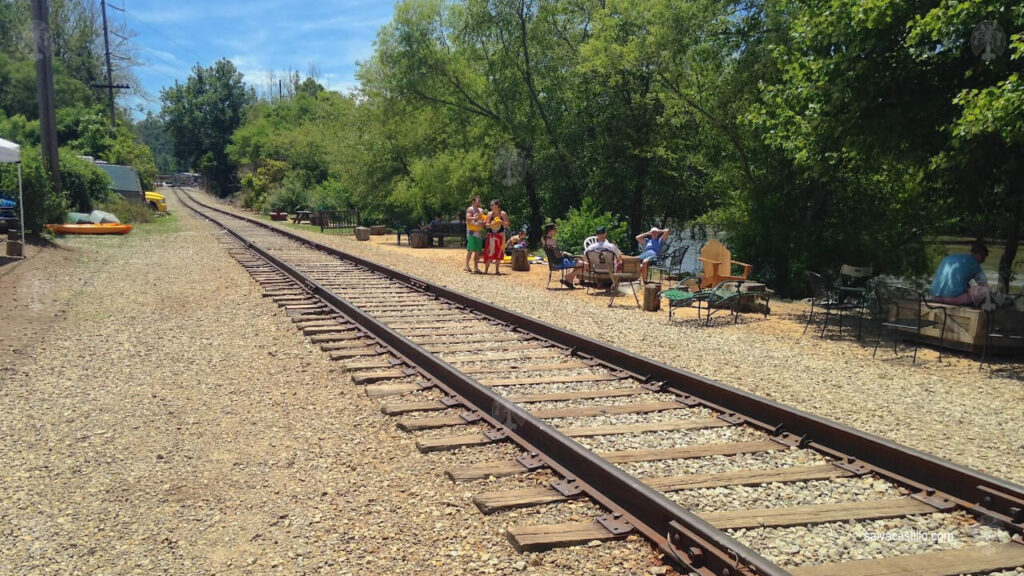

One of the city’s historic anecdotes occurred when the World War II B-17 bomber “Memphis Belle” (so famous it was made into two movies) was back in the U.S. doing displays after being the second bomber crew to survive 25 bombing missions – as it was then required to make it back home from the war front. His captain, Robert Morgan, an Asheville native, was doing a promotional flight in town and decided to make a splash in front of his neighbors. So he headed down Main Street, intending to pass between City Hall and the courthouse. But the plane was almost wider than the street, so once he realized that he might crash from the sides, he decided to rotate the plane and pass between the buildings with the wings vertical at 60 degrees. The audience was shocked to see Little Bobby, neighbor Mabel’s, flying a 10-ton plane at such a low altitude in the middle of the city. How daring!
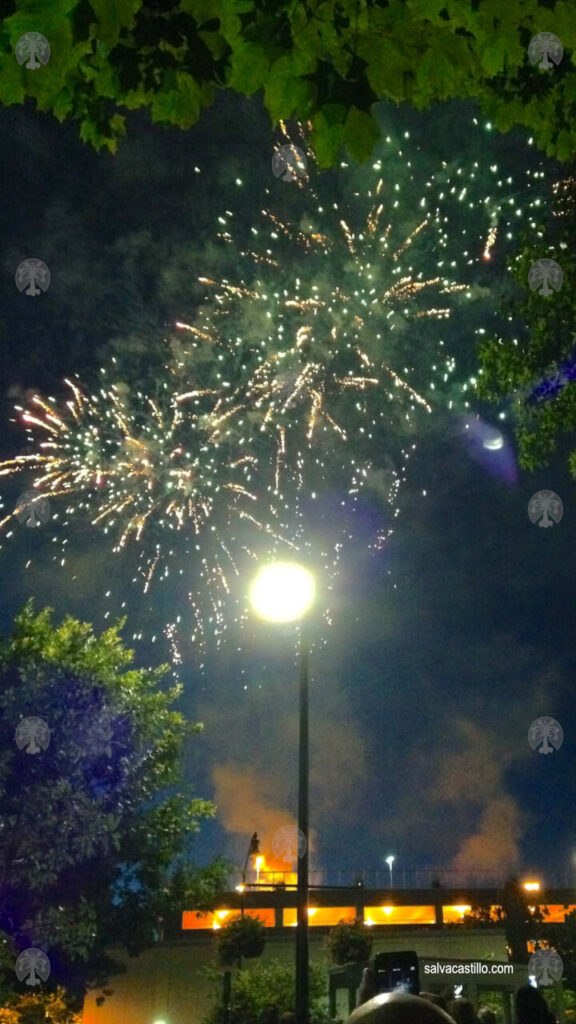
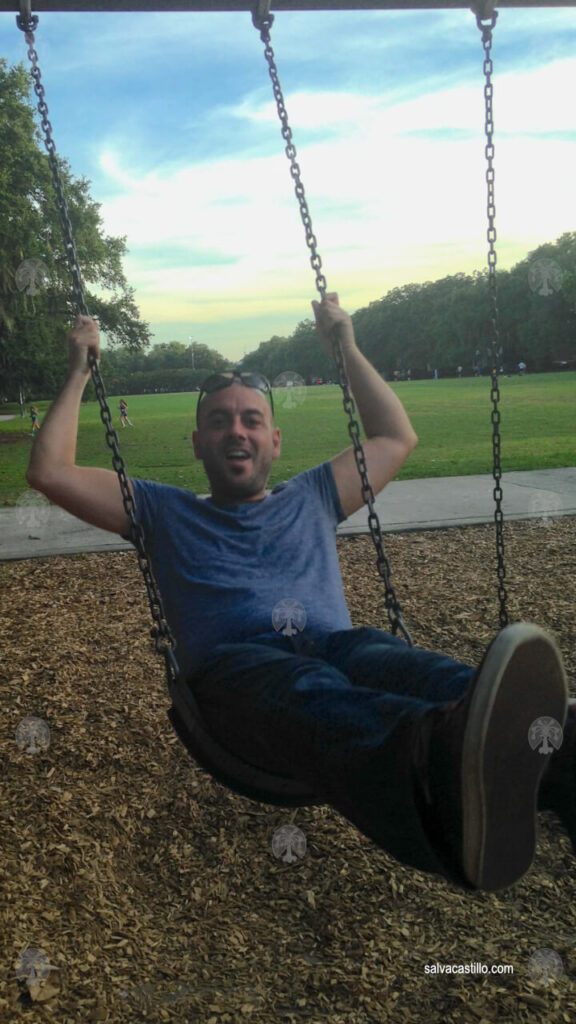
Biltmore Estate
The Biltmore Estate, located on the outskirts of Asheville, is the largest private mansion in the United States and an outstanding example of French Renaissance architecture. It was built by George Washington Vanderbilt II; the Vanderbilts are one of the wealthiest families in the U.S., with a fortune amassed in the railroad business during the Industrial Revolution by patriarch Cornelius Vanderbilt. Today the Vanderbilts hold numerous real estate interests, art collections, fashion, etc. They even brought out a famous women’s perfume to honor the family. CNN journalist – and very much a progressive – Anderson Cooper is the son of Gloria Vanderbilt, one of the heirs to the empire.
The mansion was built between 1889 and 1895; the estate encompasses more than 8,000 acres of beautifully landscaped gardens, woodlands and grounds. The mansion has more than 250 rooms, including 35 bedrooms and 43 bathrooms, reflecting the opulent lifestyle of the high society of the time.
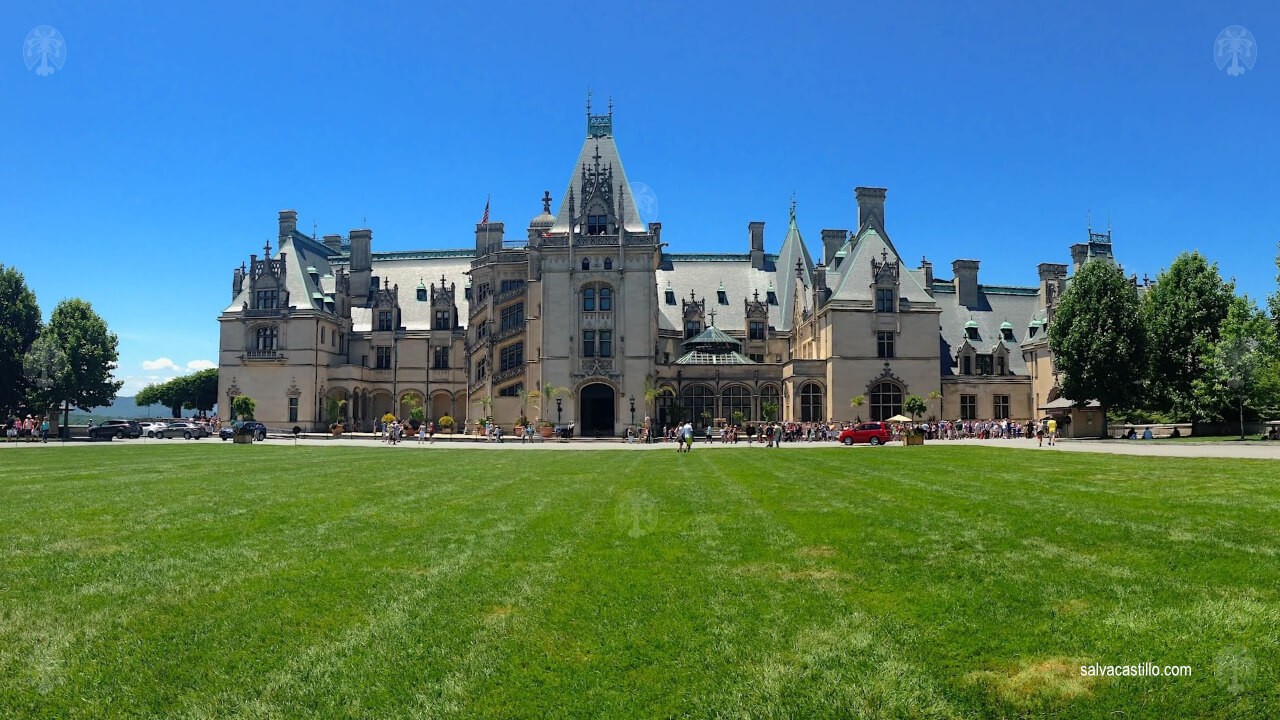
The interior of the Biltmore Estate is stunning, adorned with antique furniture and artwork. The numerous security guards scattered throughout the rooms did not allow me to take photos of the interior, but you can get an idea of the level of opulence in their own promotional video. Library, music room, swimming pool, bowling alley, billiard room, conservatory… the summum of industrial aristocracy.
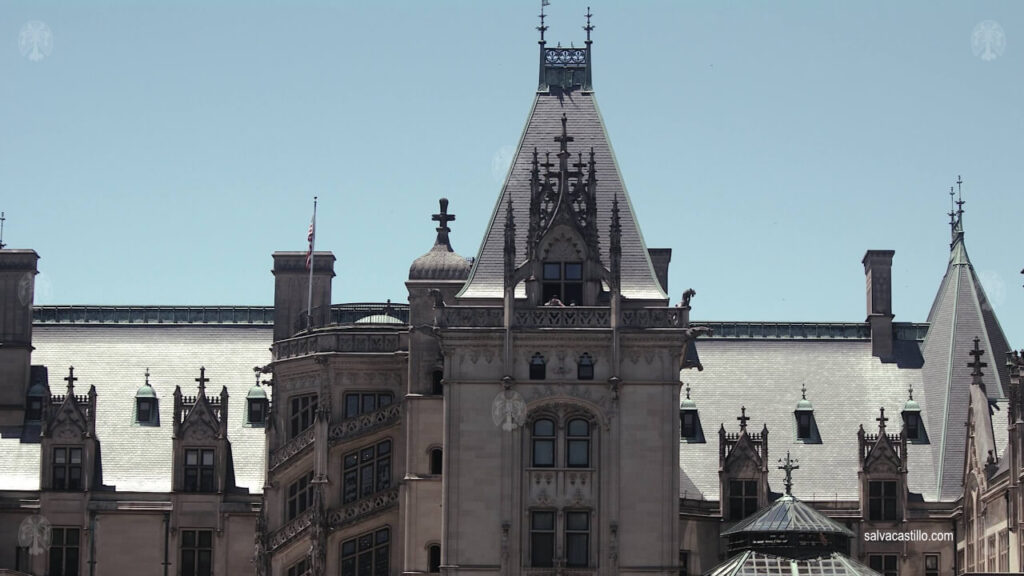
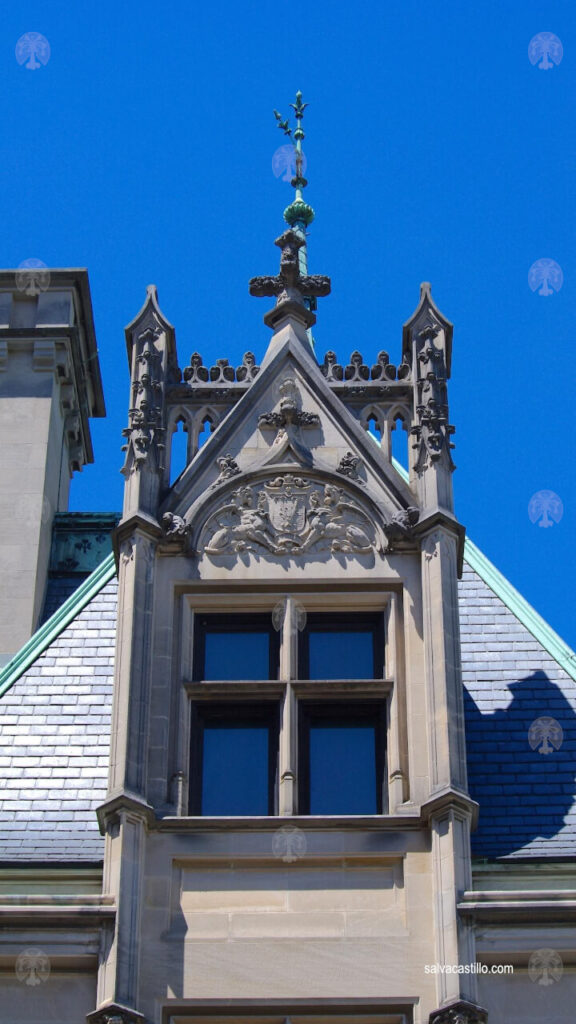
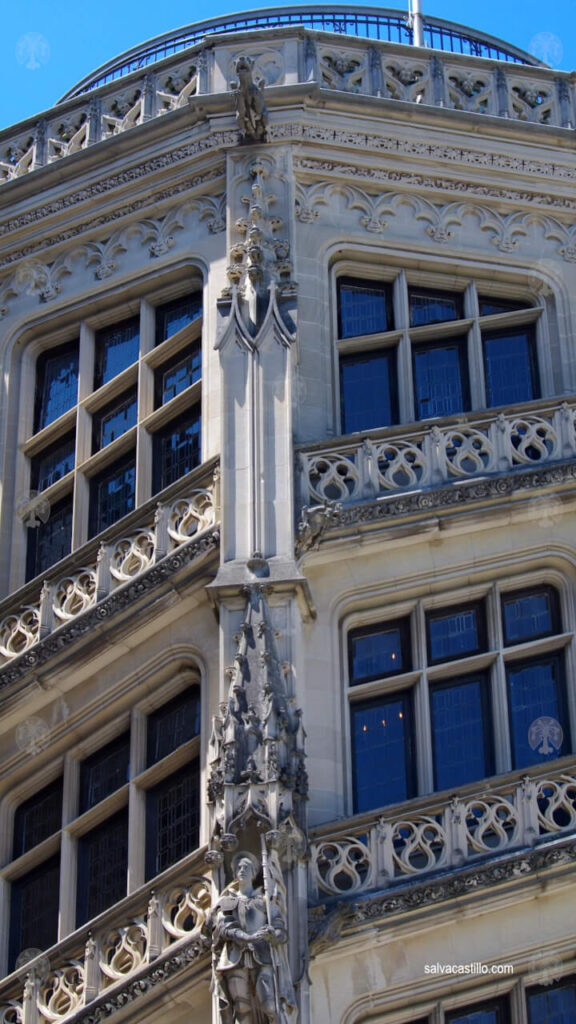
Its gardens are a masterpiece of landscape design and were created by the famous landscape designer Frederick Law Olmsted, known for his work in New York’s Central Park. The majesty of the gardens is in the same range as the mansion: it is off the charts.
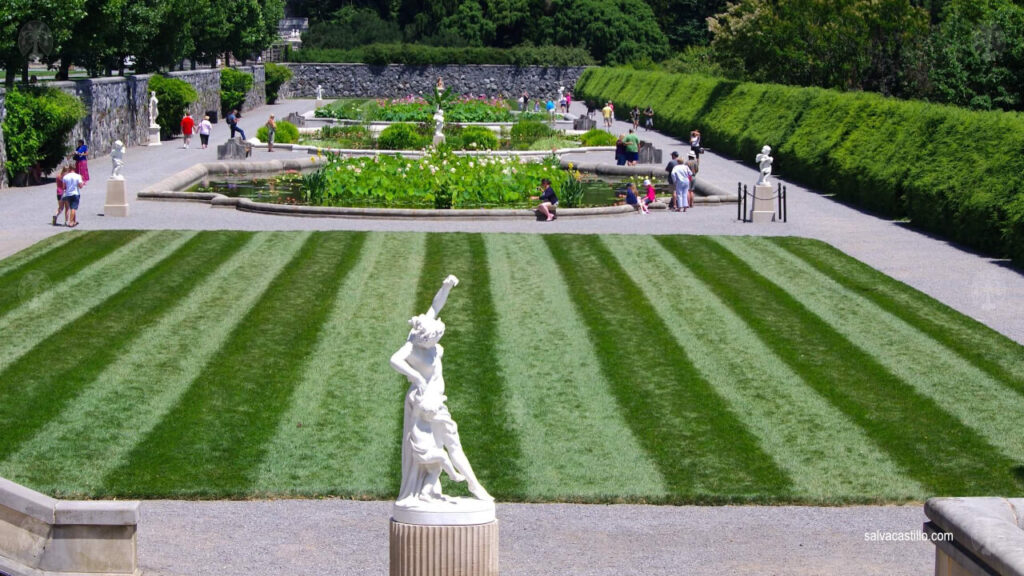
The Entrance Pond is filled with Koi carps, which swim among the clusters of water lilies that are distributed throughout the surface.
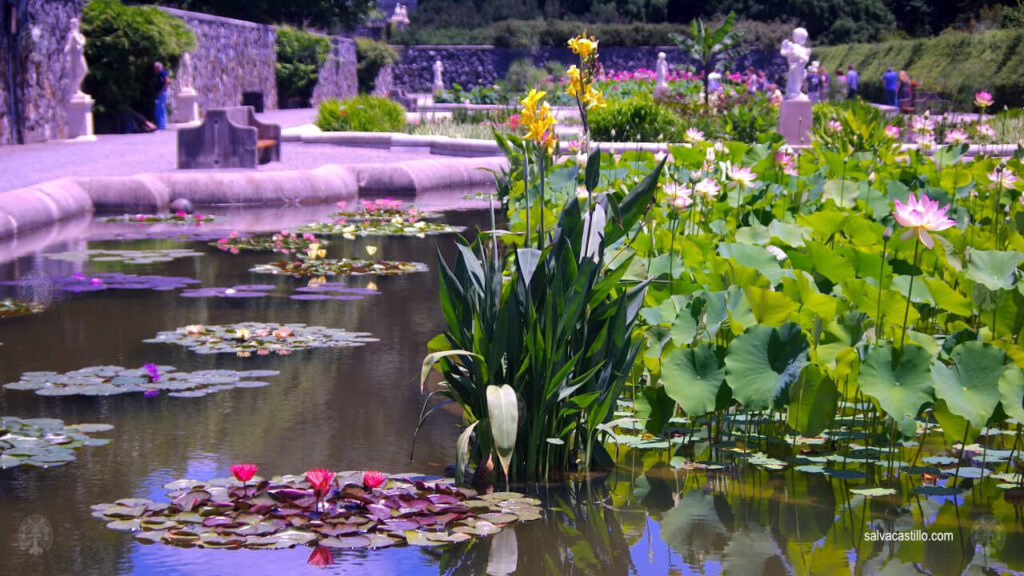

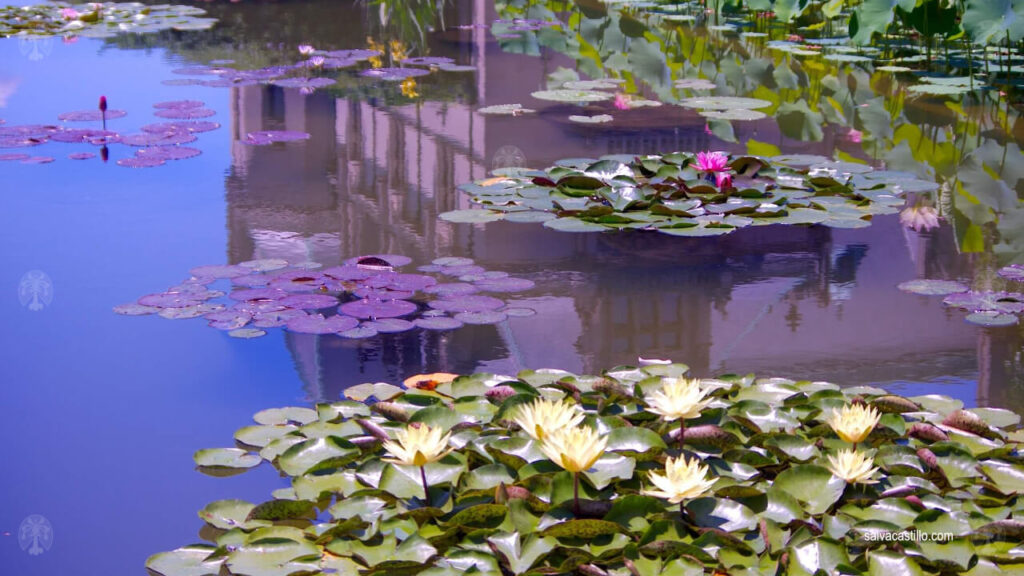
The Rose Garden has more than 250 varieties of roses that bloom during the warmer months, filling the air with their fragrance. The Azalea Garden is equally impressive in spring.
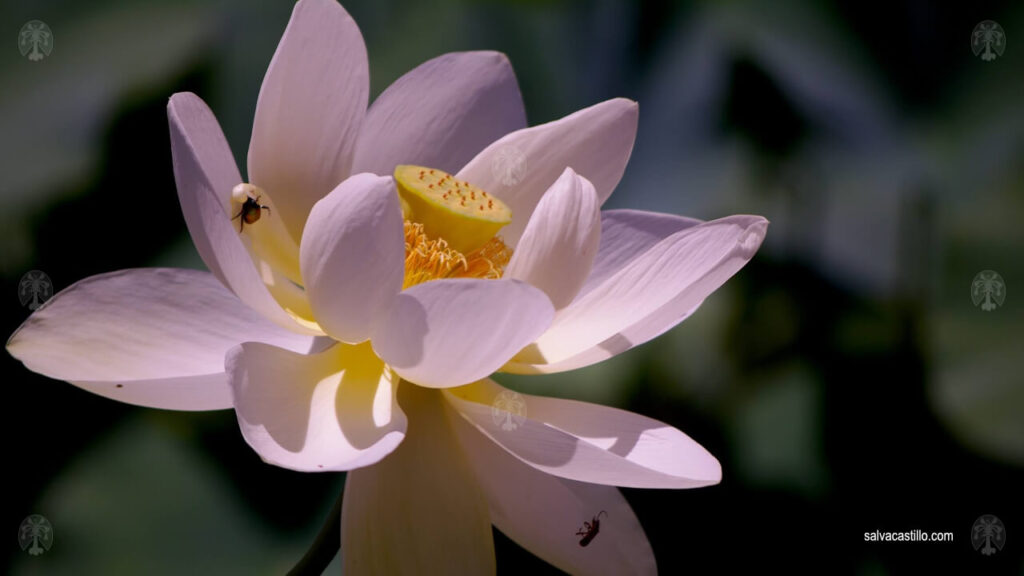
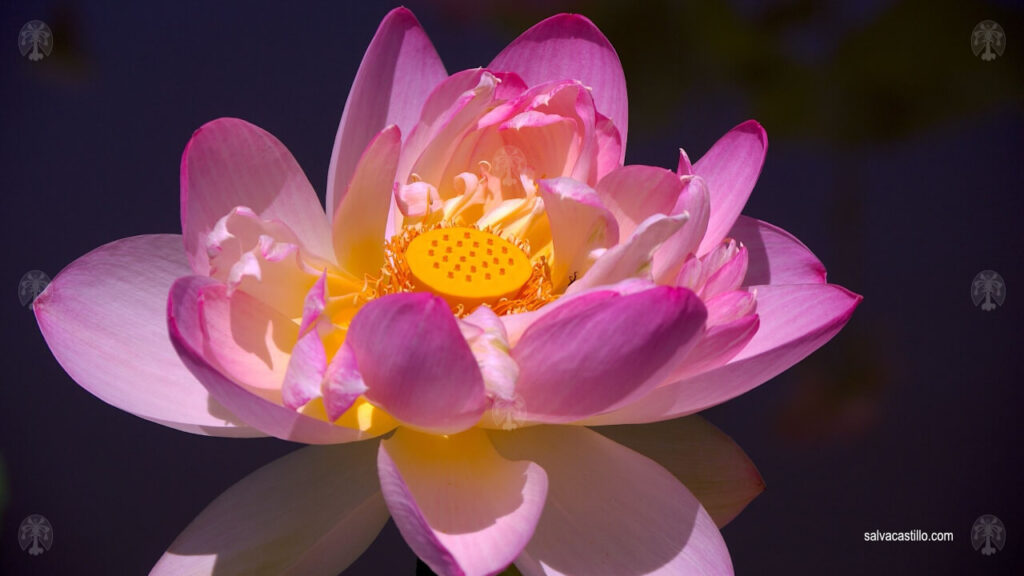
In addition to gardens, Biltmore has a large expanse of vineyards and even today produces a wide range of wines, including whites, reds, rosés and sparkling wines, which can be found in wine stores across the country-I’ve seen them at Publix. The Biltmore cellars store an impressive collection of vintage wines. The 1895 vintage is particularly significant because it represents the first year of wine production at the estate .

I really liked North Carolina. It is a state of deep forests, intense green, mountains, streams, bears… and with access to the sea. Like Asturias, but the size of Spain. And Asheville has a very cool vibe indeed.
